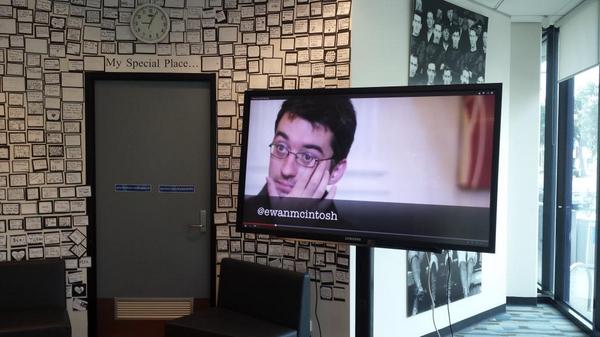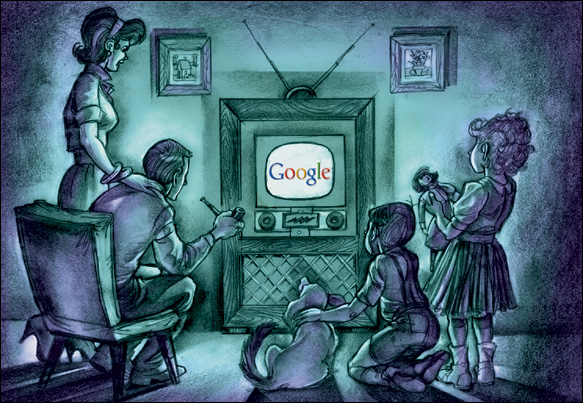
Learning is the process of acquiring knowledge, which is an active process and operates at both individual and social levels. When it comes to information behaviour within this context there are a wide range of theories and models which represent thinking and research investigations in this field. Existing models have elements in common, though most models in library and information science focus on information seeking and the information user, while those from the field of communications focus on the communicator and the communication process. It is certainly worth stopping and revisiting these models, to better understand the ‘cognitive actors’ or other influences at play (Robsons & Robinson, 2013)
What I’m particularly interested in are the Information seeking behaviours and places of information seeking which are constantly changing, and of course growing in possibilities all the time. While we can study models in depth, as academic or professional pursuits, when we consider how we think in the digital age, Bradbury hits the nail on the head for some of our common issues:
Our modern-day information processing is both careless in how it is consumed and how it is related back to others: rarely do we intentionally seek out an article, comb through it, and then selectively disperse it to an appropriate recipient. Rather, we come across it online, skim the headline or sound bites, and blast it indiscriminately via social media.
The complexities of information behaviour are so important to understand and be responsive to. What can we hope to do about this, or what is being done? After all, you could say that digital technologies tend to outsource much of what could potentially be reflective thinking to an external device that provides a quick, pre-formed answer!
I was quite taken by a reflection on the Fourth Age of Libraries, and will share an example here from author Sean McMullen:
Recently, for a story that I was writing, I researched intelligence in crows. So my first stop was to type ‘intelligence and crows’ into Google. I was instantly offered 8,180,000 links. At 5 seconds per hit, working 12 hours per day, it would take about two and a half years to check them all. Everyone can surf the Internet, but librarians can do it effectively. Since I am more interested in using information than finding it, I will continue asking librarians for help.
Yes! Information seeking, and good information behaviours will continue to involve quality curation and equally open information dissemination processes.
Two reports
Two reports I picked up this week add to my pool of readings to help with my thinking about the information era dilemmas.
We have to nurture the ability to read – and read well! Measuring the impact of thousands of libraries across multiple countries is quite a formidable undertaking, but with support from the Bill and Melinda Gates Foundation, an external research team examined from Room to Read examined libraries in Laos, Nepal, India, Sri Lanka, Zambia, and South Africa. To establish a baseline, they began evaluations at the schools before a Room to Read library was established and tracked progress in reading habits over the course of two years.

The most exciting takeaway from the study is that they have been able to confirm empirically that libraries are helping children become independent readers.
Read the full report summary.
The second useful report to examine comes from the Knowledge Exchange, and the report Sowing the seed: Incentives and Motivations for Sharing Research Data, a researcher’s perspective. A qualitative study, commissioned by Knowledge Exchange, has gathered evidence, examples and opinions on current and future incentives for research data sharing from the researchers’ point of view, in order to provide recommendations for policy and practice development on how best to incentivize data access and re-use. Researchers’ experiences, data sharing practices and motivations are shown to be heterogeneous across the studied research groups and disciplines. Incentives and motivations ask for development of a data infrastructure with rich context where research data, papers and other outputs or resources are jointly available within a single data resource. Different types of data sharing and research disciplines need to be acknowledged. This report that shows what a long journey is yet ahead of us, to beat the general google-grabbing of low-level information, because better quality material is hidden. Download the study ‘Sowing the seed: Incentives and Motivations for Sharing Research Data, a researcher’s perspective’
Moving forward
So let’s focus on technology and supporting services. Libraries are a significant focus point in our communities, and technology is the other. As we invent more technology and forms of media, we also need to reinvent our community interactions as virtual and physical spaces of exchange for cultural and knowledge development. Libraries can continue to lead the way in this – from the national services to the quality services in your small local school library. Building reading along with development and refinement of information seeking strategies and long term information behaviours, educators and organisations need to remain open and responsive – skipping the fads that are not supported by research and proven to stand the test of rigorous investigation.
The good news is that libraries are morphing. Read the Near and Far Future of Libraries .As archives become digital and machines become smarter, what function will libraries serve ten years and ten thousand years from now? See what some interesting experts had to say!
Our priority has to be our connections, and creating a flow of knowledge for all ages, across communities, nations and people. Our connections and the flow of knowledge is vital through building on critical thinking, communication, collaboration, and creativity.
If you love something – set it free!
References:
Andrew Robson, & Lyn Robinson. (2013). Building on models of information behaviour: linking information seeking and communication. Journal of Documentation, 69(2), 169–193. doi:10.1108/00220411311300039
Image: creative commons licensed ( BY-NC-SA ) flickr photo shared by whatmattdoes














